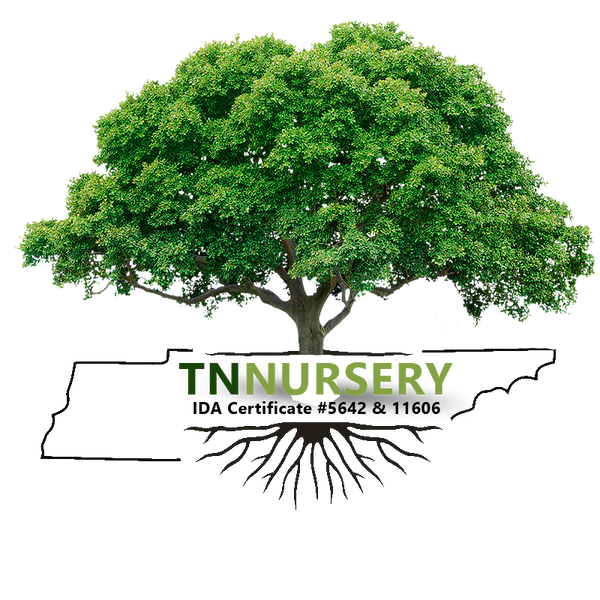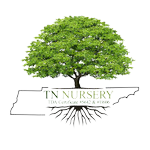


Your Planting Zone is:
-
- Exposure
- Sun or Shade
-
- Height At Maturity
- Under 12 Inches
-
- Planting Zones
- 3-7
-
- Shipped As
- Bare-root
-
- Ships
- Now
-
- Usage
- Flower Gardens
Squirrel Corn Plants

This product is rated 4.0 of 5.0 stars.
It has received 1 review.
Description
The Squirrel Corn plant, whose botanical name is Dicentra Canadensis, is usually grown for its beautiful flowers. The perennial dies after its blooming period and goes dormant during the summer, fall, and winter seasons. It is native to eastern North America and grows in forests and woodlands.
Besides its lovely blooms, this perennial is known for its uniquely shaped roots. At the roots’ end are yellow nodules that resemble corn on the cob.
Squirrel Corn Has Stunning Heart Shape Blooms
The flowers are heart-shaped, similar to those of the bleeding heart. They are pinkish-white. The bloom is less than a half-inch wide and about an inch long. The spring-blooming perennial has a considerably short blooming season.
They start to bloom in April and end in May. The flowers’ stems are dark green, sometimes with a touch of brown, and point downwards. As the flowers fade away, the perennial's leaves begin to take center stage.
The triangular leaves can be green with a hint of blue or gray, and the bottom is light green. They can grow to about ten inches in length and divide multiple times, creating a lace pattern similar to that of the fern.
The leaf's surface is smooth but has a waxy texture underneath. The perennials grow to about a foot in height.
Squirrel Corn Thrives In Zones 4-7
These perennials are easy to grow and perform best in hardiness zones 4 through 7. The perennials prefer shady or partially shady locations. Their soil preference is well-drained, moist, rich soil.
It is essential to ensure it receives plenty of water during the spring when it is blooming and most active. If needed, fertilizer can be added to the soil once a year.
This perennial makes a beautiful addition to any natural or woodland garden. It is also the perfect perennial for an ornamental garden and will certainly add interest to any shade garden during the spring months.
Squirrel Corn Makes A Great Ground-Cover
It grows slowly, making it a perfect choice for a border perennial or ground cover. Due to its slow growth will not become a nuisance perennial, encroach upon other perennials, or take up a lot of space. Even though it only blooms briefly, it is a beautiful focal point for any spring garden.
This perennial - is Dicentra canadensis. Squirrel Corn is a shade-dwelling, herbaceous perennial with hanging or erect, greenish-white, creamed-colored, or pinkish-tinged heart-shaped flowers that bloom between April and May.
The average height of this high insect and disease-resistant perennial can range from 6 to 12 inches. The short stem, blue-grey leaves, and smooth foliage give the foliage a fern-like appearance. The common name comes from the underground yellow clustered root system, which resembles kernels. It grows in the wild and gardens as a fragrant ornamental addition to the landscape.
It is an excellent choice for Organic perennial additions to your garden.
This wildflower grows widely in parks and other areas. When in bloom, its flowers are heart-shaped and pale pink. These wildflowers look great in flower gardens and natural areas.
This wildflower is often used as an ornamental garden perennial.
This small herbaceous perennial is native to the Woodlands of the eastern United States. It grows in the moistest woodlands, bogs, and dry soils in various spots along the Appalachian mountain range.
The Squirrel Corn Goes Dormant In Summer
This perennial will go dormant for most of the year and will only appear in spring when it is time to bloom. The tubers for this perennial are spread easily by small woodland rodents. This perennial is not for human consumption.
It is often found growing in parks with extensive gardens. It also excels in average soils and grows well in moist soil conditions. Its blooms are heart-shaped and white. Squirrels and rabbits love squirrel corn.
Reviews
Shipping and Warranty
Shipping Information
We dig fresh our plants and ship immediately. We ship US Mail, Priority shipping. You will receive a tracking number once your plants ship. All plants will be fine in their packages for up to 3 days after receiving.
How We Protect Your Plants For Transit
We sell only bare root plants. We dip the roots in tera-sorb silicone gel to retain ample moisture for transit and surround with plastic. This is superior protection for plants in transit for up to 12 days.
Upon Receipt Of Your Plants
Open your plants and inspect the same day received. We offer 3 days to report any problems with your order. Bare root plants need to be planted within 2-3 days of receiving unless weather-related problems prohibit planting. Store in a cool place and keep roots moist and covered with plastic until they can be planted. Water for the first week daily after planting.
See our warranty page for further info.
Gardening Tips
Videos
The Squirrel Corn plant, whose botanical name is Dicentra Canadensis, is usually grown for its beautiful flowers. The perennial dies after its blooming period and goes dormant during the summer, fall, and winter seasons. It is native to eastern North America and grows in forests and woodlands.
Besides its lovely blooms, this perennial is known for its uniquely shaped roots. At the roots’ end are yellow nodules that resemble corn on the cob.
Squirrel Corn Has Stunning Heart Shape Blooms
The flowers are heart-shaped, similar to those of the bleeding heart. They are pinkish-white. The bloom is less than a half-inch wide and about an inch long. The spring-blooming perennial has a considerably short blooming season.
They start to bloom in April and end in May. The flowers’ stems are dark green, sometimes with a touch of brown, and point downwards. As the flowers fade away, the perennial's leaves begin to take center stage.
The triangular leaves can be green with a hint of blue or gray, and the bottom is light green. They can grow to about ten inches in length and divide multiple times, creating a lace pattern similar to that of the fern.
The leaf's surface is smooth but has a waxy texture underneath. The perennials grow to about a foot in height.
Squirrel Corn Thrives In Zones 4-7
These perennials are easy to grow and perform best in hardiness zones 4 through 7. The perennials prefer shady or partially shady locations. Their soil preference is well-drained, moist, rich soil.
It is essential to ensure it receives plenty of water during the spring when it is blooming and most active. If needed, fertilizer can be added to the soil once a year.
This perennial makes a beautiful addition to any natural or woodland garden. It is also the perfect perennial for an ornamental garden and will certainly add interest to any shade garden during the spring months.
Squirrel Corn Makes A Great Ground-Cover
It grows slowly, making it a perfect choice for a border perennial or ground cover. Due to its slow growth will not become a nuisance perennial, encroach upon other perennials, or take up a lot of space. Even though it only blooms briefly, it is a beautiful focal point for any spring garden.
This perennial - is Dicentra canadensis. Squirrel Corn is a shade-dwelling, herbaceous perennial with hanging or erect, greenish-white, creamed-colored, or pinkish-tinged heart-shaped flowers that bloom between April and May.
The average height of this high insect and disease-resistant perennial can range from 6 to 12 inches. The short stem, blue-grey leaves, and smooth foliage give the foliage a fern-like appearance. The common name comes from the underground yellow clustered root system, which resembles kernels. It grows in the wild and gardens as a fragrant ornamental addition to the landscape.
It is an excellent choice for Organic perennial additions to your garden.
This wildflower grows widely in parks and other areas. When in bloom, its flowers are heart-shaped and pale pink. These wildflowers look great in flower gardens and natural areas.
This wildflower is often used as an ornamental garden perennial.
This small herbaceous perennial is native to the Woodlands of the eastern United States. It grows in the moistest woodlands, bogs, and dry soils in various spots along the Appalachian mountain range.
The Squirrel Corn Goes Dormant In Summer
This perennial will go dormant for most of the year and will only appear in spring when it is time to bloom. The tubers for this perennial are spread easily by small woodland rodents. This perennial is not for human consumption.
It is often found growing in parks with extensive gardens. It also excels in average soils and grows well in moist soil conditions. Its blooms are heart-shaped and white. Squirrels and rabbits love squirrel corn.
Shipping Information
We dig fresh our plants and ship immediately. We ship US Mail, Priority shipping. You will receive a tracking number once your plants ship. All plants will be fine in their packages for up to 3 days after receiving.
How We Protect Your Plants For Transit
We sell only bare root plants. We dip the roots in tera-sorb silicone gel to retain ample moisture for transit and surround with plastic. This is superior protection for plants in transit for up to 12 days.
Upon Receipt Of Your Plants
Open your plants and inspect the same day received. We offer 3 days to report any problems with your order. Bare root plants need to be planted within 2-3 days of receiving unless weather-related problems prohibit planting. Store in a cool place and keep roots moist and covered with plastic until they can be planted. Water for the first week daily after planting.
See our warranty page for further info.

